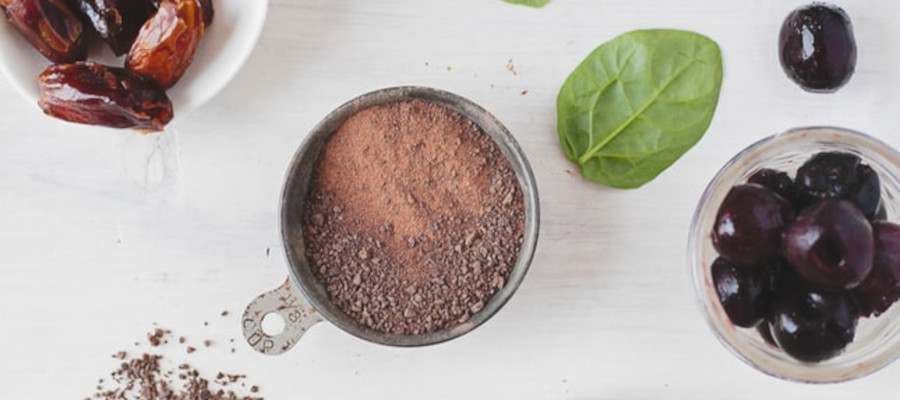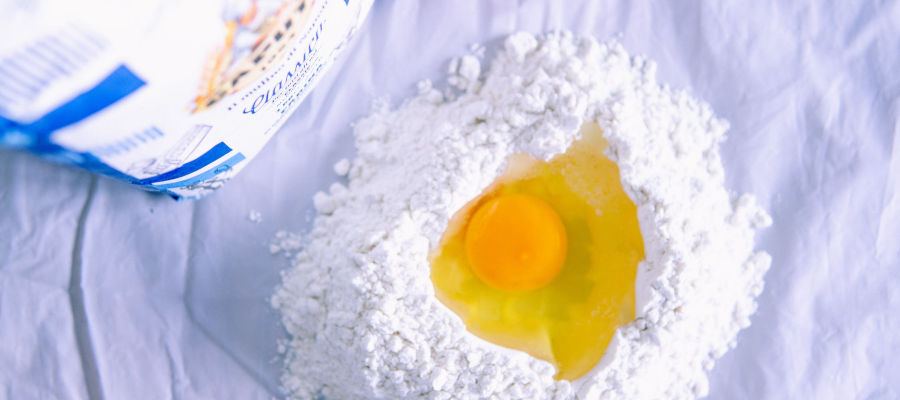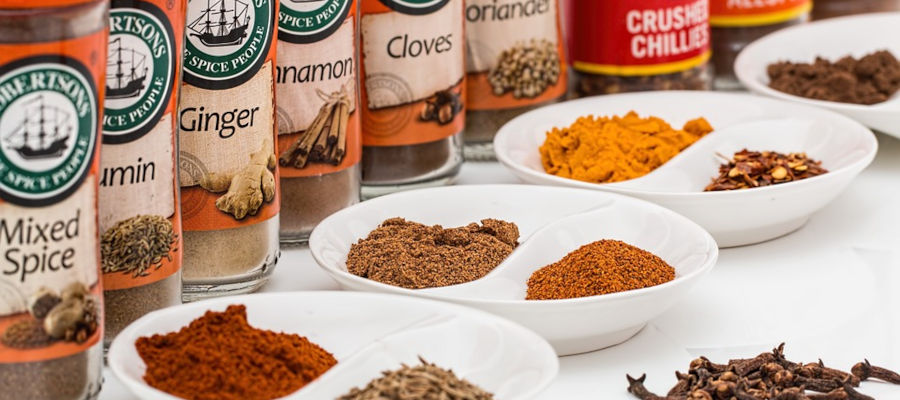Tapioca pearls are a quick way to add some interesting texture to your foods, no matter if you're making something savory or sweet. These tapioca pearls can make every bite of pudding more pleasing or can loosen up the dough of your desserts to create something lighter and fluffier. When used in savory sauces and soups, tapioca pearls can offer a velvety consistency that will make the food stand out. Tapioca is relatively flavorless and will take on the flavor of whatever it is cooked with or soaked with, making it remarkably versatile and easy to incorporate into your cooking.
What are tapioca pearls?
Tapioca pearls come from the cassava root, a root that is native to South America and the Caribbean. When these plants are harvested, peeled and washed, they can then be turned into one of the plethora of popular forms of tapioca: powder, starch, sticks, flakes, or in this case, tapioca pearls. The pearls are round in shape and are used for a number of different things, most commonly found in puddings, soups, bubble tea, and other foods.
What do tapioca pearls taste like?

Tapioca pearls, just like any other iteration of tapioca, is relatively tasteless. In fact, most of the flavor that tapioca has will come from whatever it is cooked with or soaked in. This makes it remarkably versatile in terms of what you can do with it. Tapioca pearls will easily absorb the flavors of whatever it is made with, including sweet fruity syrups like those found in bubble tea or in the flavors included in the pudding you make.
Which dishes can you prepare with tapioca pearls?
Tapioca pearls, also known as boba or bubble tea pearls, are commonly used in a variety of dishes and beverages. Here are some popular preparations that include tapioca pearls:
- Bubble Tea: The most well-known use of tapioca pearls is in bubble tea or boba tea. These chewy pearls are combined with a variety of flavored teas, milk, and sweeteners to create a refreshing and popular drink.
- Tapioca Pudding: Tapioca pearls can be used to make a delicious tapioca pudding. The pearls are cooked with milk, sugar, and flavorings such as vanilla or coconut, resulting in a creamy and textured dessert.
- Fruit and Tapioca Parfait: Layer cooked tapioca pearls with fresh fruits like mangoes, strawberries, or kiwis, along with yogurt or whipped cream to create a colorful and tasty parfait.
- Tapioca Soup: Tapioca pearls can be added to soups to give them a unique texture. They can be included in both sweet and savory soups, such as taro soup, pumpkin soup, or coconut soup.
- Tapioca Pancakes: Incorporate cooked tapioca pearls into pancake batter to create a fun twist on traditional pancakes. The pearls add an interesting texture and can be complemented with fruits or other toppings.
- Tapioca Dumplings: Tapioca pearls can be used to make dumplings, similar to mochi. The pearls are mixed with glutinous rice flour and steamed or boiled, resulting in chewy and translucent dumplings that can be served with sweet or savory fillings.
- Tapioca Stir-Fry: Tapioca pearls can be stir-fried with vegetables, meat, or seafood, similar to the use of rice or noodles. They add a unique texture to the dish and absorb the flavors of the other ingredients.
These are just a few examples of the many dishes you can prepare with tapioca pearls. Their versatility allows for creative uses in both sweet and savory recipes, so feel free to experiment and explore different culinary possibilities.
Tapioca pearls in bubble tea
In the meantime, the hype about bubble tea has subsided somewhat. Nevertheless, you can still buy special tapioca pearls or order the drink with the gelatinous pearls in tea shops and bars.
Tapioca pearls are made from the starch of manioc, the roots of a shrub originally native to South or Central America.
The raw tapioca pearls must be cooked before consumption. Within about 30 minutes they take on a transparent, jelly-like consistency.
The taste of tapioca starch is neutral. To get some flavor in the tapioca pearls, you can soak them in fruit syrup or sweet solutions.
Food colors give the beads the desired color.
Consumer protectionists are critical of the popular gel beads: The flavors and colors used, as well as preservatives, are often a health risk that is difficult to calculate.
Doctors warned as early as 2012 that the tapioca pearls could be swallowed uncontrollably through a straw. Especially for younger children, they said, there was a danger of swallowing the tapioca pearls with bubble tea.
Tapioca sago
Tapioca, also Tapioca pearls, is also available in the form of small balls with a diameter of about 1 millimeter. As such "sago", the manioc starch is ideal for thickening various dishes.
Especially the preparation of desserts, such as coconut pudding or red fruit jelly, is very successful with the tasteless tapioca pearls.
Cooking with tapioca granules has a visual appeal: the spherical shape is still clearly visible even with the swollen pearls. The appearance is somewhat reminiscent of caviar.
In terms of taste alone, the starch pearls are not important. This is why they also fit well into hearty sauces or soups, to which they lend a special "charm" and a little more consistency.
An advantage for all those who have to do without gluten: Tapioca (tapioca pearls) is/are guaranteed gluten-free.
Tapioca, also tapioca pearls, provide(s) just as much energy as starch: around 350 kilocalories per 100 grams (unswollen).
Thumb value: Use about 1/10 of the amount of liquid you want to thicken. This means that to thicken half a liter you would use about 50 grams of sago.
How are tapioca pearls used in cooking?
While most people commonly think of pudding when they think of tapioca, there are many other ways to include this starch in your cooking. One of the ways is to add it to soups and stews. Its unique texture will make the soup feel creamier and velvety without adding any unwanted flavors to the mix. The pearls can be used in desserts in order to loosen up the dough and make it more pliable.
How to cook tapioca pearls
- Fill a large pot with 8 cups of water and bring to the boil. Add the tapioca pearls. When the pearls start to float on the surface, turn the heat up to medium. Leave to boil for 30 minutes and stir occasionally so that the tapioca pearls do not touch the bottom or stick together. Turn off the stove and let it rest for 30 minutes with the lid on the pot.
- As soon as the tapioca pearls are cooked, pour off the water, and rinse with cold water. Soak the pearls in maple or sugar syrup and "marinate" them for at least 20 minutes. Put the pearls aside, but they should be at room temperature or they will harden. The longer they sit, the "crispier" they become. Therefore it would be ideal to consume them within 24 hours.
- Boil your favorite tea and let it cool down. If you have a cocktail shaker, mix and shake tea, ice, milk, and fruits (as you wish). If you do not have a shaker, start with 2 tablespoons of tapioca pearls, a few ice cubes, and the tea on top. Get extra-large straws so that the big beads can get through. Have fun cooking tapioca pearls!
Are tapioca pearls safe to eat?
Tapioca, before it is cleaned and cooked, does contain trace elements of toxins, but by the time it is bagged, it has been cleansed of those toxins and is entirely safe to eat contrary to what some people believe about these starch pearls.


